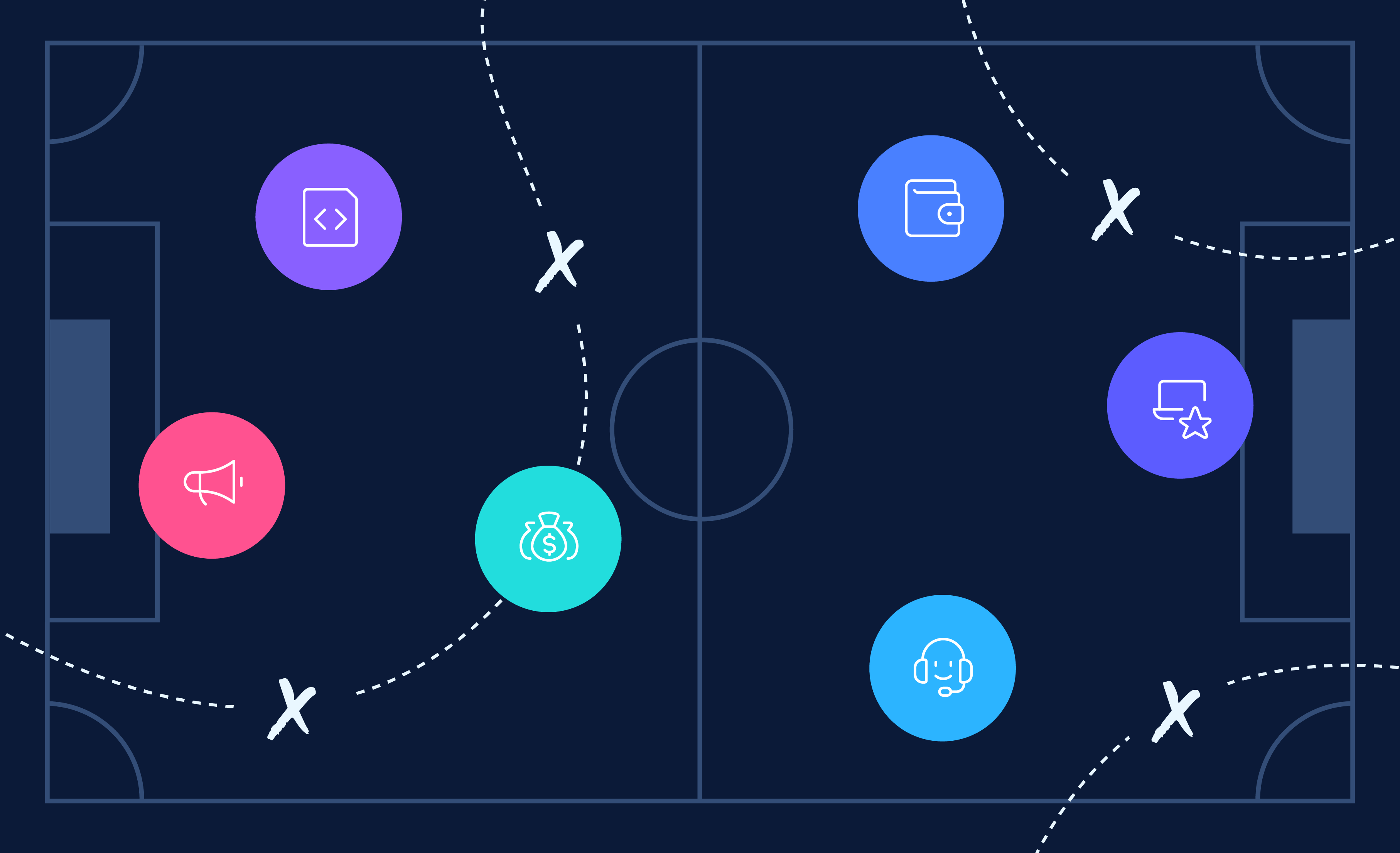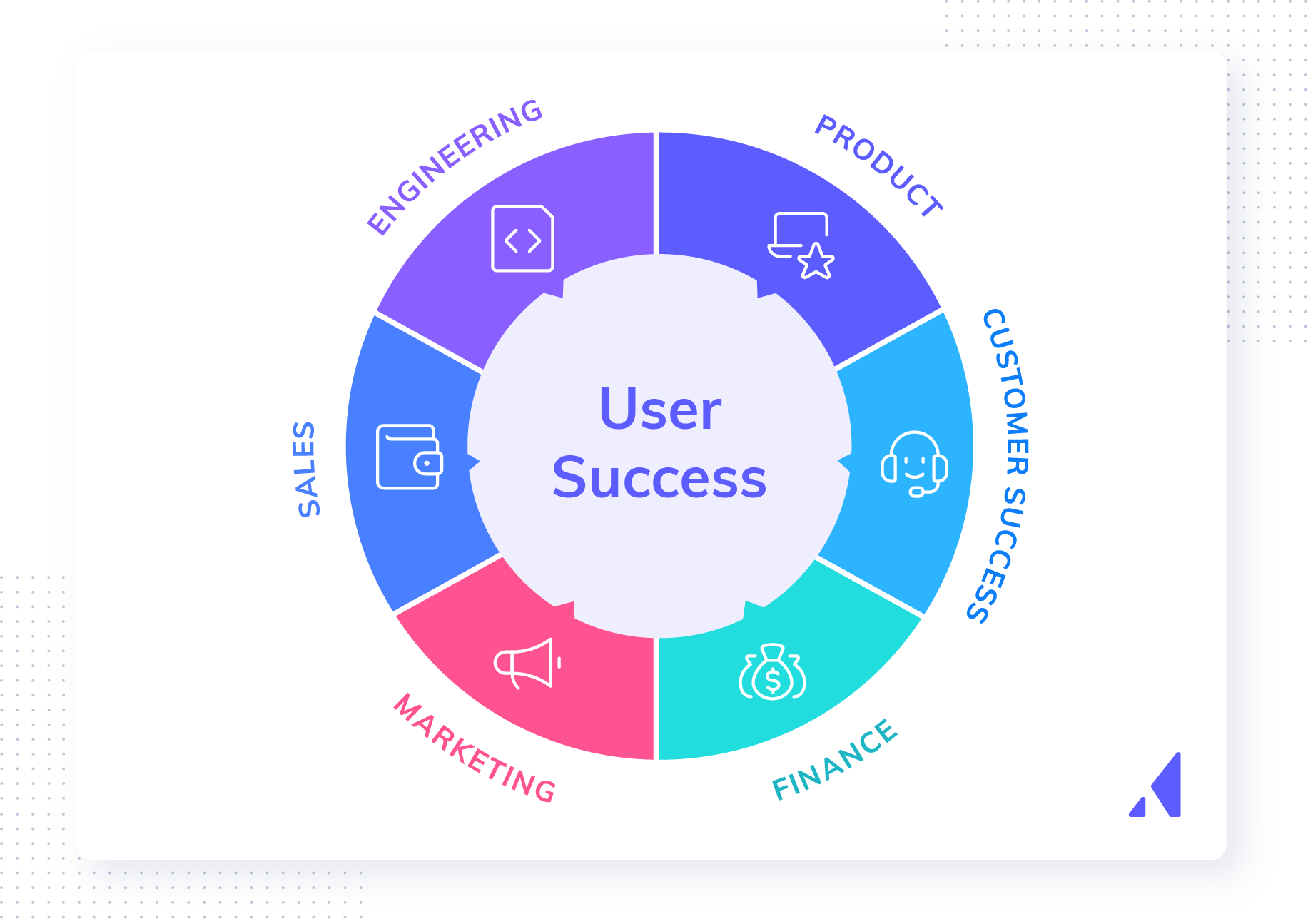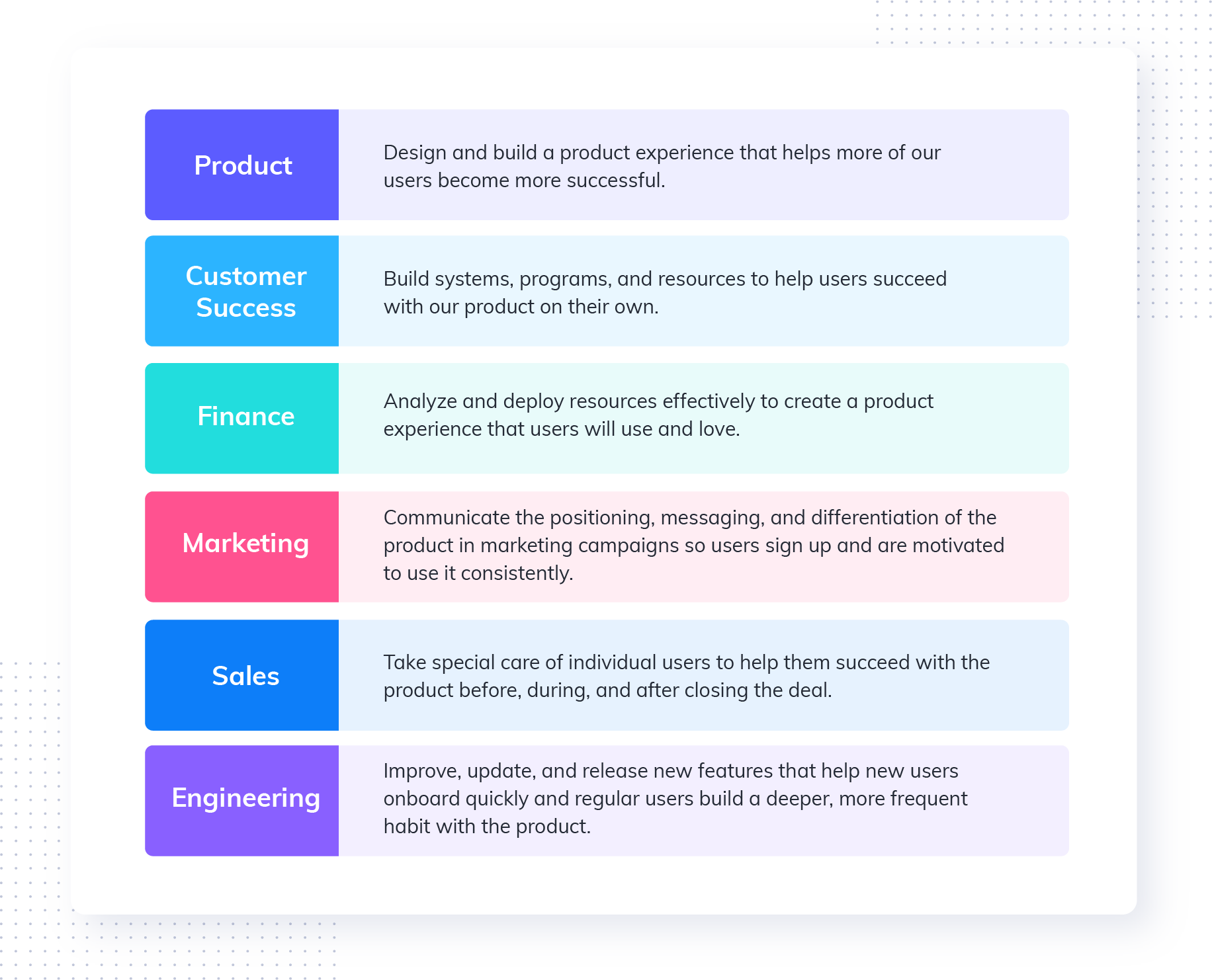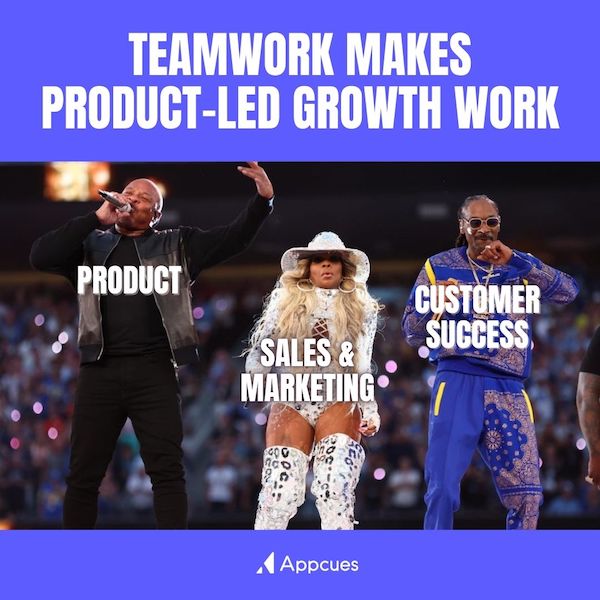Product-led growth is a team sport

.png)

.png)
Product-led growth (PLG) is (often) misunderstood.
Increasingly, all kinds of orgs are adopting a product-led focus. The problem? Some of them overcorrect by elevating the product team's vision above other functions—like sales, marketing, and customer success.
In reality, PLG is quite different.
Truly great product-led experiences emerge from empowered, fully cross-functional teams. Instead of centering PMs in every decision, actual product-led growth requires a collaborative, team effort, where every function supports each other to deliver a seamless customer experience.
So how can your team foster truly collaborative PLG? For starters, it requires removing cross-functional barriers, encouraging deep levels of collaboration, and aligning the team around a common goal—user success.
User success is the common thread tying product-led teams together. The goal of these teams is to help as many users succeed with the product as possible—often before they become customers.
This reality underscores an important point: that user success is the center of the product-led experience.

Helping more users succeed with the product becomes the rallying cry and singular focus of a product-led organization. Though one team may champion product-led growth within a company, it requires buy-in and alignment from every team across the organization: product, customer success, finance, marketing, sales, and engineering:

User success is the heartbeat that breathes life into product-led organizations. It’s at the center of the product-led experience, which requires every team's involvement to be a success.
Here’s another way to look at it: delivering a product-led experience is a lot like running a relay race. Let's break down why.
As users progress through the customer journey— from learning about the product and signing up for a trial to becoming paying customers—each team needs to seamlessly pass the baton. If they don't, then users are more likely to fall through the crack and churn.
As shown below, every team has a critical role to play in the product-led growth flywheel.

In the relay race of the product-led buyer journey, your marketing team is the first one out of the gate. They create content that helps users learn about the value of the product and encourages them to sign up for a free account or demo.
Next, the sales team connects with users who need more help in experiencing the product's value quickly, getting internal buy-in, or cutting through bureaucracy and red tape.
Finally, the customer success (CS) team runs the relay leg. By educating customers about product features and use cases and preventing support issues, CS helps them become lifelong power users—and gets your product adoption across the finish line.
Supporting all of this is the product team, which creates a product experience that helps users achieve their desired outcome with the product.
As you can see, only as a team can product-led organizations win and experience the full benefits of PLG, including shorter sales cycles, lower customer acquisition costs, and higher revenue per employee. As Allan Wille, Co-Founder of Klipfolio, puts it:
"Product-led growth means having every team focused on the product. That’s how you create a culture that is built around enduring customer value."

The product-led growth strategy requires a complete alignment of product, marketing, sales, and customer success teams. The key to this approach is ensuring every team is hyper-focused on helping users succeed with the product and delivering seamless customer experiences. That is the true north of product-led organizations—and can only be achieved as a team.